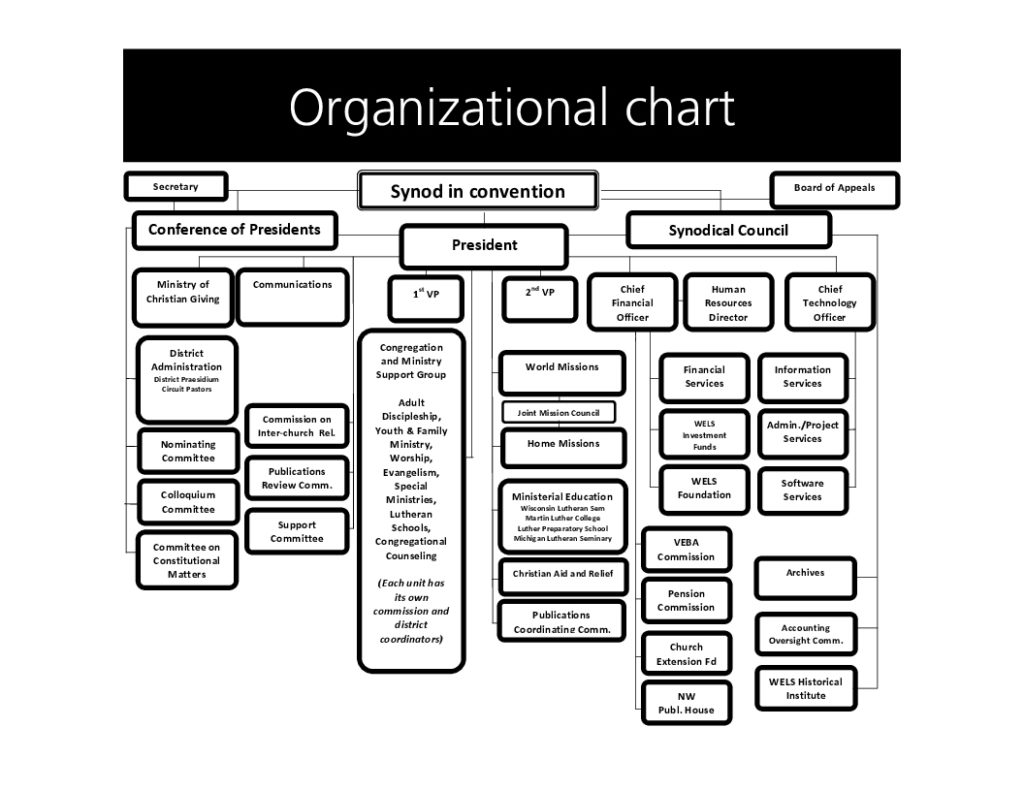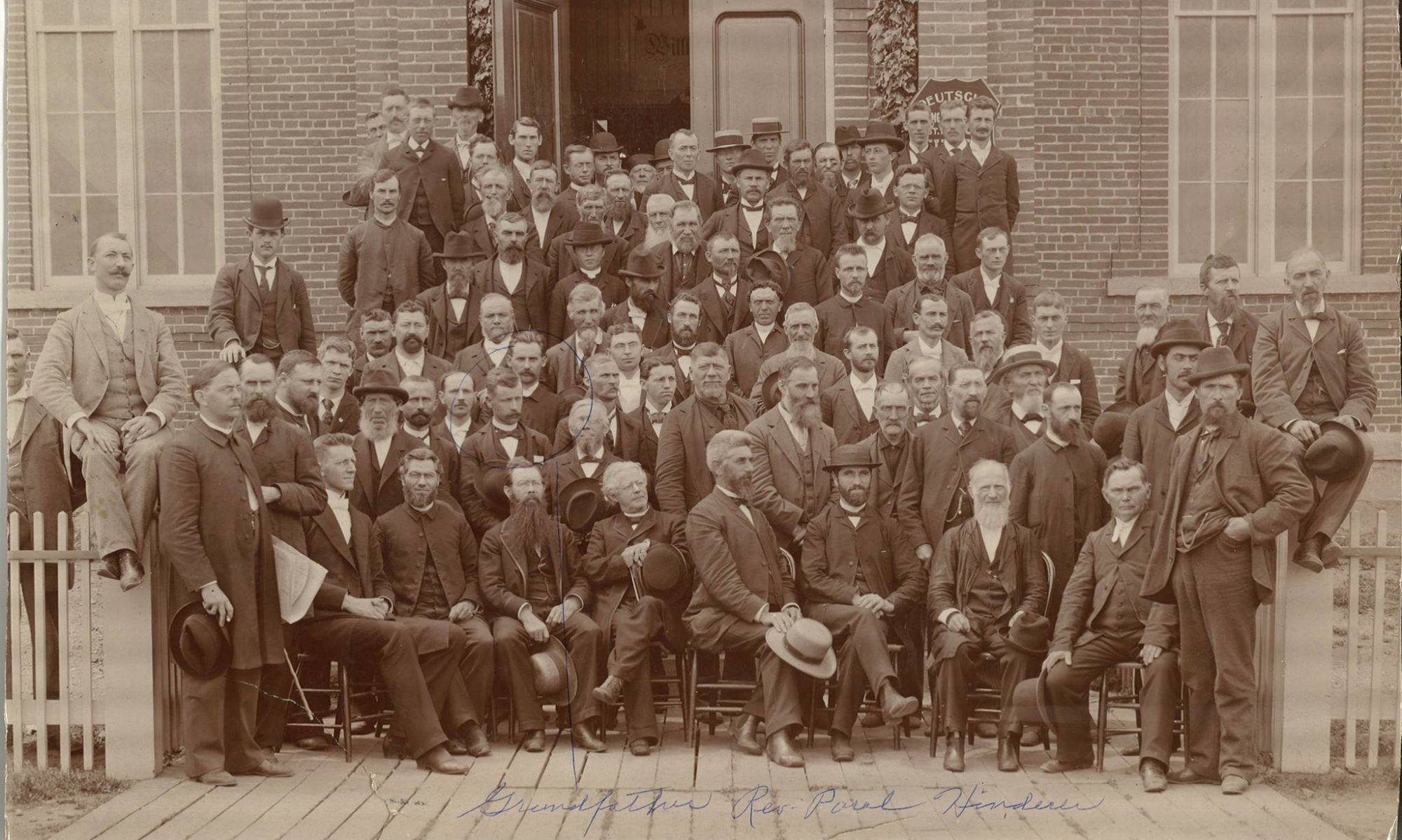It is a good thing to understand the relationship your church has to Synod. It will help us to better understand what the convention is all about. Let’s look at how our church body is organized.

Your Church:
Each congregation in Synod is an autonomous body. This means they are their own entity. They are not run or owned by Synod. They have no obligation to Synod other than remaining faithful in Word and Practice. The congregation, as a body of believers, chooses to join Synod. In order to do so, they must submit a church constitution to Synod stating they are in fellowship with Synod.
If approved, the congregation is accepted as a member of Synod. This makes the congregation eligible to receive the benefits of calling WELS trained pastors and teachers, as well as many other supportive programs. Equally important, it allows the congregation to work with a larger church body which is able to carry out ministry (such as foreign missions) which an individual congregation doesn’t have the resources to do. A congregation belongs to one of Synod’s 12 Districts.
Districts
Synod is currently divided into 12 geographical areas called Districts. Each district holds a District Convention in the years when Synod does not have one (every two years). District specific actions are taken and information from Synod is submitted for approval or input. This is often acted upon at the next Synod Convention. District Officers are elected by the Convention Delegates. One of these officers is the District President.
District President
The District President oversees the Word and practice of congregations in his District. He is responsible for providing Call Lists to congregations who are Calling a pastor. The District President has many responsibilities. The most important one is belonging to the Conference of Presidents (COP).
Conference of Presidents
The Conference of Presidents is composed of the 12 District Presidents, as well as the Synod President (Mark Schroeder) and the two Synod Vise-Presidents who are elected by the Synod Convention. The COP is entrusted by Synod with three broad responsibilities; Doctrine, Called Workers, and Congregations. The Conference of Presidents is the body which determines where new candidates graduating from Sem and MLC are assigned. It is equal in authority with the Synod President and the Synodical Council. It is responsible to Synod Convention.
Synodical Council
The Synodical Council is composed of 21 members. 12 of these members are layman who represent their respective District. The COP elects three of its own members. Synod Convention elects six At Large members. Two pastors, a male teacher, and three Area of Ministry chairman also belong. The Synod President serves as the chairman.
The Synodical Council serves as the legal representative of Synod. It has many responsibilities including matching Synod’s resource with the desired areas of ministry, creating a budget, and submitting to Convention a Synod long range plan. The Synodical Council is responsible to Synod Convention.
The Conference of Presidents, Synod President, and Synodical Council are equal, but with different responsibilities. They are to work in harmony with one another. They are the check and balance of power in Synod’s leadership. They are all accountable to Synod Convention.
Please understand, this is just a very bare bones breakdown. There are a huge amount of responsibilities placed on the men who lead our Synod. More details can be found in the Synod Constitution. The organizational chart gives a more detailed breakdown of Synod’s structure.
